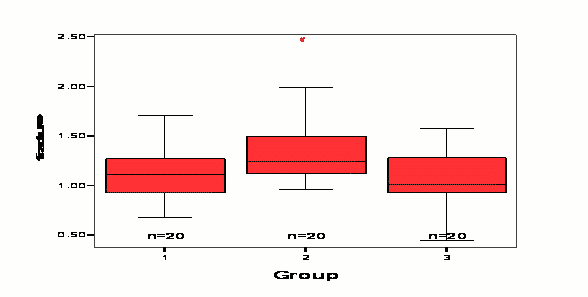ABSTRACT: 0372
Fracture Toughness of Three Provisional Restorative Materials
| L.T. TRAN, and R. PERRY, Tufts University, Boston, MA, USA |
Objective: To compare fracture toughness of three different provisional restorative materials in vitro. Methods: Typodont teeth #19 and #21 was used as abutment teeth, with dimensions of 2 mm occlusal clearance, 1 mm full chamfer margin and all line angles rounded. Impregum (3M ESPE) impression material was used to capture model and to duplicate model with Die Keen. Sixty, three-unit bridges (20 each group) were fabricated; Group 1-Venus Temp C&B (Heraeus), Group 2- Protemp 3 Garant (3M ESPE) and Group 3-Integrity (Dentsply Caulk) provisional restorative materials. Missing tooth #20 became a modified ridge lap pontic design. Bridges were seated and cemented with Tempbond (Kerr). All samples were stored in deionized water at 37 C for two weeks after preparation prior to further testing. Furthermore, they were thermocycled for 300 cycles between 5C and 55C with a dwell of 30 seconds. This process was used to mimic natural stress in the mouth. Samples were then tested under the Instron machine for fracture toughness. Maximum loads were recorded and fracture toughness determined. Results: According to the one-way analysis of variance (ANOVA) there was a statistical significant difference for all groups (p=0.014). The Post Hoc test (Bonderroni) determined there was no significant different between groups 1 and 2 (p=0.065) and no significant different between group 1 and 3 (p= 1.000). However, there was significant different between group 2 and 3 (p=0.018). BOXPLOT
Conclusion: Provisional restorative materials exhibit similar fracture toughness. Group 2 performed best comparing to other two groups. Sponsored in part by Heraeus. |
| Seq #63 - Provisional Materials, Posts, Wear Testing 2:45 PM-3:45 PM, Thursday, April 3, 2008 Hilton Anatole Hotel Trinity I - Exhibit Hall |
©Copyright 2008 American Association for Dental Research. All Rights Reserved.
